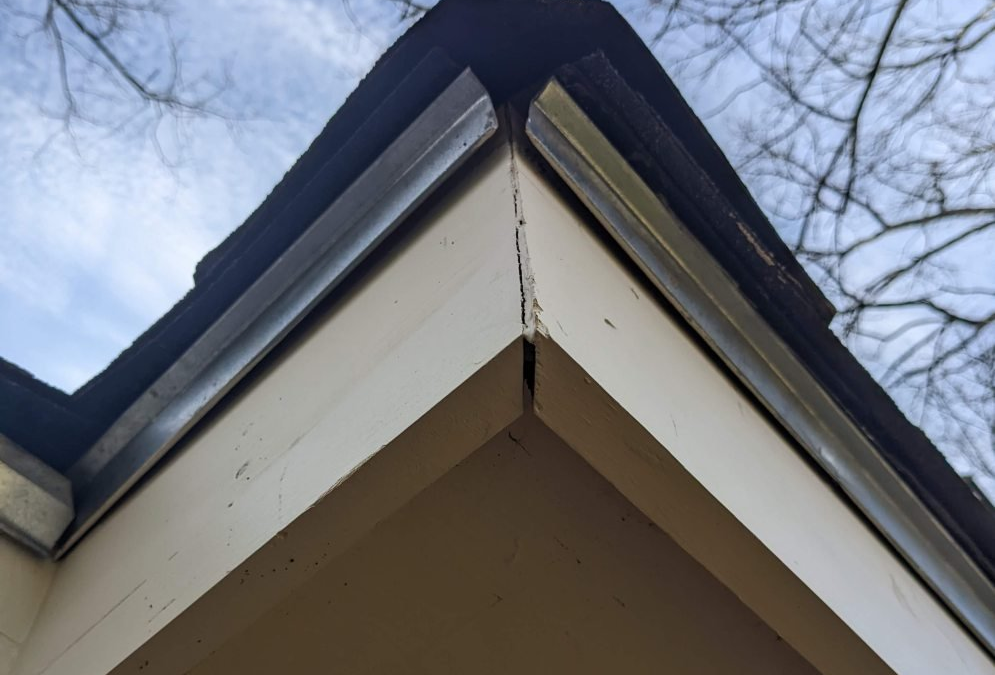In Cincinnati, Ohio, where the weather often swings between heavy rains and winter snow, managing water drainage is critical for maintaining your home’s integrity. At Gutters Etcetera, we understand the importance of every component in your gutter system, especially the often-overlooked gutter drip edge. This guide explores what a gutter drip edge is, why it’s crucial for Cincinnati homeowners, and how it works to protect your roof, fascia, and foundation from costly water damage.
What is a Gutter Drip Edge?
A gutter drip edge is a slim, metal strip installed at the edges of your roof. Its primary function is to guide rainwater into the gutters while shielding your roof’s edge, fascia, and soffit from water infiltration. By preventing water from seeping under the shingles or dripping behind the gutters, a drip edge ensures the structural integrity of your home remains intact, even during Cincinnati’s heavy rain or snowmelt.
Why is a Gutter Drip Edge Important?
Cincinnati’s climate, marked by frequent rainstorms and seasonal ice dams, can take a toll on your home’s exterior. Without a drip edge, water can seep into vulnerable areas, causing damage that is expensive and time-consuming to repair. Here are a few reasons why a drip edge is essential:
- Protects Fascia and Soffit: Water dripping behind the gutters can rot the fascia and soffit, compromising the structure of your roofline.
- Prevents Roof Deck Damage: Without a drip edge, water can creep under shingles, leading to roof deck warping, rot, and leaks.
- Improves Gutter Efficiency: A drip edge ensures water flows smoothly into the gutters, reducing the risk of overflow and clogs.
- Extends Roof Longevity: By preventing water damage, a drip edge helps your roof last longer and withstand Cincinnati’s weather extremes.
Materials Used in Gutter Drip Edges
Drip edges are available in a range of materials to suit different budgets and requirements. Common options include:
- Aluminum: Lightweight, affordable, and resistant to rust, aluminum is a popular choice for many homeowners.
- Galvanized Steel: Known for its strength and durability, galvanized steel offers long-lasting performance, even in harsh weather.
- Copper: A premium option that combines elegance and durability, copper adds a decorative touch to your roofline but comes at a higher cost.
Choosing the right material depends on your home’s architectural style, budget, and local weather conditions.
Types of Gutter Drip Edges
Understanding the types of drip edges can help you choose the one best suited for your roof:
- Type C (L-Shaped)
- The most common design, featuring a straightforward “L” shape that fits neatly under shingles and over the fascia.
- Type D (T-Shaped)
- Features a curved profile to direct water further away from the roofline, providing enhanced protection.
- Type F (Gutter Apron)
- Often used in retrofits or on roofs with extended shingles, this type offers extra coverage and ensures proper water redirection.
How Does a Gutter Drip Edge Work?
A drip edge serves as a barrier and guide for rainwater. Installed along the roofline, it extends slightly beyond the fascia, directing water directly into the gutters. By keeping water away from the roof decking, fascia, and soffit, it prevents water infiltration and the damage it can cause. When paired with a well-maintained gutter system, a drip edge ensures efficient water drainage and protects your home from moisture-related issues.
Common Issues Without a Drip Edge
Without a drip edge, your home may face several water-related problems, especially in Cincinnati’s rainy climate. Common issues include:
- Fascia Rot: Water dripping behind the gutters can cause the fascia to rot, leading to structural instability and unsightly damage.
- Roof Deck Deterioration: Moisture seeping beneath shingles can weaken the roof deck, causing warping, rot, or leaks.
- Foundation Damage: Water dripping from the roof’s edge can pool around the foundation, increasing the risk of cracks and basement flooding.
- Ice Dams: In winter, melted snow can refreeze at the roof’s edge, creating ice dams that exacerbate water damage.
When to Install or Replace a Gutter Drip Edge
The ideal time to install or replace a drip edge is during a roof replacement or major roof repairs. However, if your home lacks a drip edge or shows signs of water damage—such as rotting fascia, peeling paint, or roof leaks—consider retrofitting a drip edge. Regular inspections by a professional can help identify whether your home needs a new drip edge.
Benefits of Installing a Drip Edge
Adding a drip edge to your roofline offers a range of benefits, including:
- Enhanced Water Management: Directs rainwater into the gutters, preventing overflow and clogs.
- Structural Protection: Shields the fascia, soffit, and roof deck from water damage.
- Improved Gutter Performance: Reduces strain on the gutter system, especially during heavy rains or snowmelt.
- Aesthetic Appeal: Provides a clean, finished look to your roofline.
- Code Compliance: Many modern building codes require drip edges for new construction or roof replacements.
Gutters Etcetera: Cincinnati’s Gutter Experts
At Gutters Etcetera, we are committed to educating Cincinnati homeowners about the importance of maintaining their gutter systems. A drip edge may seem like a minor component, but its role in protecting your home from water damage is invaluable. Whether you’re planning a roof replacement, upgrading your gutter system, or addressing existing water issues, understanding the benefits of a drip edge is crucial for making informed decisions.
Conclusion
A gutter drip edge is a small but powerful addition to your home’s gutter system. It plays a vital role in preventing water damage, protecting your roof and fascia, and ensuring efficient water drainage. In a city like Cincinnati, where rain and snow can challenge even the best-maintained homes, a drip edge is an essential safeguard.
Gutters Etcetera proudly serves Cincinnati homeowners, offering insights and guidance on all things gutters. By taking the time to learn about components like the drip edge, you can protect your home from costly damage and maintain its structural integrity for years to come.

